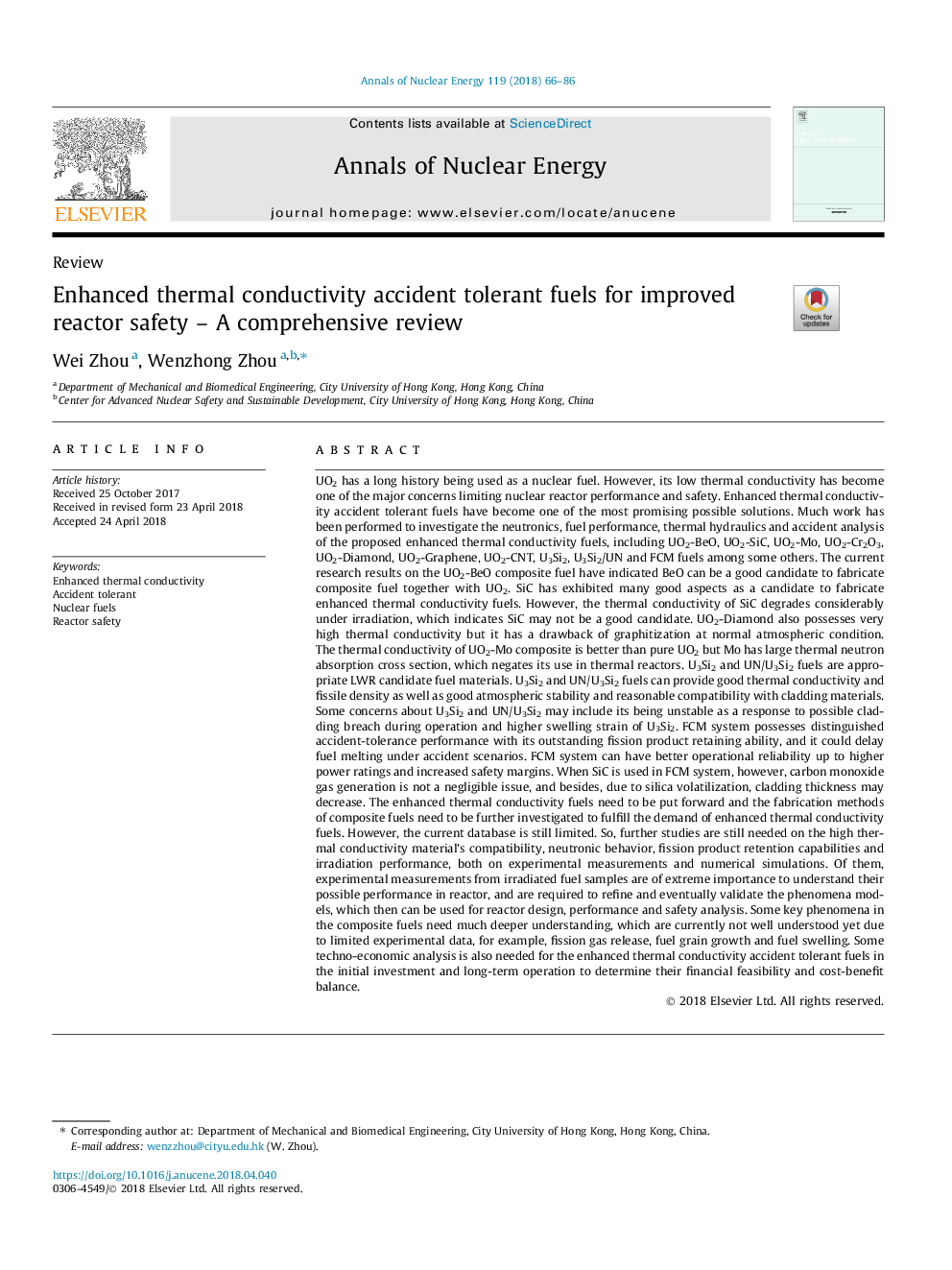| کد مقاله | کد نشریه | سال انتشار | مقاله انگلیسی | نسخه تمام متن |
|---|---|---|---|---|
| 8066907 | 1521077 | 2018 | 21 صفحه PDF | دانلود رایگان |
عنوان انگلیسی مقاله ISI
Enhanced thermal conductivity accident tolerant fuels for improved reactor safety - A comprehensive review
ترجمه فارسی عنوان
سوخت های تحمل کننده هدایت حرارتی پیشرفته برای ایمنی راکتور بهبود یافته - یک بررسی جامع
دانلود مقاله + سفارش ترجمه
دانلود مقاله ISI انگلیسی
رایگان برای ایرانیان
کلمات کلیدی
هدایت حرارتی پیشرفته، تحمل حوادث، سوخت هسته ای، ایمنی راکتور
موضوعات مرتبط
مهندسی و علوم پایه
مهندسی انرژی
مهندسی انرژی و فناوری های برق
چکیده انگلیسی
UO2 has a long history being used as a nuclear fuel. However, its low thermal conductivity has become one of the major concerns limiting nuclear reactor performance and safety. Enhanced thermal conductivity accident tolerant fuels have become one of the most promising possible solutions. Much work has been performed to investigate the neutronics, fuel performance, thermal hydraulics and accident analysis of the proposed enhanced thermal conductivity fuels, including UO2-BeO, UO2-SiC, UO2-Mo, UO2-Cr2O3, UO2-Diamond, UO2-Graphene, UO2-CNT, U3Si2, U3Si2/UN and FCM fuels among some others. The current research results on the UO2-BeO composite fuel have indicated BeO can be a good candidate to fabricate composite fuel together with UO2. SiC has exhibited many good aspects as a candidate to fabricate enhanced thermal conductivity fuels. However, the thermal conductivity of SiC degrades considerably under irradiation, which indicates SiC may not be a good candidate. UO2-Diamond also possesses very high thermal conductivity but it has a drawback of graphitization at normal atmospheric condition. The thermal conductivity of UO2-Mo composite is better than pure UO2 but Mo has large thermal neutron absorption cross section, which negates its use in thermal reactors. U3Si2 and UN/U3Si2 fuels are appropriate LWR candidate fuel materials. U3Si2 and UN/U3Si2 fuels can provide good thermal conductivity and fissile density as well as good atmospheric stability and reasonable compatibility with cladding materials. Some concerns about U3Si2 and UN/U3Si2 may include its being unstable as a response to possible cladding breach during operation and higher swelling strain of U3Si2. FCM system possesses distinguished accident-tolerance performance with its outstanding fission product retaining ability, and it could delay fuel melting under accident scenarios. FCM system can have better operational reliability up to higher power ratings and increased safety margins. When SiC is used in FCM system, however, carbon monoxide gas generation is not a negligible issue, and besides, due to silica volatilization, cladding thickness may decrease. The enhanced thermal conductivity fuels need to be put forward and the fabrication methods of composite fuels need to be further investigated to fulfill the demand of enhanced thermal conductivity fuels. However, the current database is still limited. So, further studies are still needed on the high thermal conductivity material's compatibility, neutronic behavior, fission product retention capabilities and irradiation performance, both on experimental measurements and numerical simulations. Of them, experimental measurements from irradiated fuel samples are of extreme importance to understand their possible performance in reactor, and are required to refine and eventually validate the phenomena models, which then can be used for reactor design, performance and safety analysis. Some key phenomena in the composite fuels need much deeper understanding, which are currently not well understood yet due to limited experimental data, for example, fission gas release, fuel grain growth and fuel swelling. Some techno-economic analysis is also needed for the enhanced thermal conductivity accident tolerant fuels in the initial investment and long-term operation to determine their financial feasibility and cost-benefit balance.
ناشر
Database: Elsevier - ScienceDirect (ساینس دایرکت)
Journal: Annals of Nuclear Energy - Volume 119, September 2018, Pages 66-86
Journal: Annals of Nuclear Energy - Volume 119, September 2018, Pages 66-86
نویسندگان
Wei Zhou, Wenzhong Zhou,
